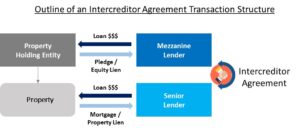A written cash flow plan starts with an organization assessing its income and expenses. It then takes steps to balance, maintain, and keep its cash flows above its expenses. It also refers to a plan of a profit or non-profit entity to ensure cash flows in a way they can manage their costs.
Cash is legal tender, currency, or coins that can be used to exchange goods or services or settle a debt. Also, cash includes the value of assets that can be easily converted into cash.
HOW DOES A WRITTEN CASH FLOW PLAN WORK?
A cash flow plan is based on an organization’s or an individual’s cash availability. In general, it is the preparation for making the best use of cash inflows. It also benefits individuals who put those funds to good use. These plans help organizations and individuals financially manage the cash available through other alternatives and investments. In addition, it’s important to design a cash flow plan in detail. It must include all the inflow and outflow of cash for the organization. Here are a few things to include while designing such a plan: –
- Cash flow from operating activities: – Operating cash flow activities cover all inflow and outflow cash. Inflow cash means cash an organization earns by selling goods. Outflow cash in this sense includes activities like purchasing raw materials, expenses, or paying taxes and employees.
- The cash flow from investment activities: – Another concept for a cash flow plan is investing activities. Long-term investment, and purchasing new equipment all qualify as investing activities in a cash flow plan.
- Cash flow from financing activities: – The concept of this plan is to classify financial decisions. Like long-term loan payments and stock sales for the organization.
Planning all the above three operating activities is very important. This plan works positively well when there are proper plans for the utilization of the funds, investments are to be made and funds are to be raised.
Example of a written cash flow plan
Assume that Organization A is a newly formed organization that is engaged in the production of a fuse. Organization A expects to sell 60 televisions a month at a price of $6,000 each. It will be paying cash expenses totaling around $60,000 the next month, and about $200,000 in other months. The start-up also expects to buy $80,000 of equipment by year’s end.
The organization would have to start formulating a cash flow plan. This is to ensure that they are capable of meeting the financial demands of these business-related expenses as they occur. Without a good cash flow plan, Organization A runs the danger of being unable to meet these financial demands. And this could cause it to raise price quickly, which is an expensive process, fire employees, or even get a loan.
IMPORTANCE
A written cash flow plan is vital for every organization to check their cash inflows on income generated and keep track of the cash outflow on various expenses. However, there is great importance in planning for the organization’s future cash outflows and inflows. It is because any future investment decisions depend upon the cash available. If, by chance, cash is not available. Then, where to borrow money or raise money, how it will cost, and everything else that involves monetary transactions Then there’s the question of where to borrow or raise funds, how much they’ll cost, and everything else involving cash transactions.
BENEFITS
Different organizations and businesses can benefit from the use of a cash flow plan. And each plan differs based on the income and expenses of the organization. It’s vital to use a written cash flow plan as the perfect tool to streamline financial planning. Here are some benefits of making use of a written cash flow plan in an organization or business.
- It helps to track the organization’s expenses.
- It helps the organization to utilize the cash optimally.
- It helps the organization/ businesses to keep track of both cash inflows and outflows.
- Lastly, both the organization and customers benefit from the planning.
CASH FLOW PLANS V. BUDGETS
Plans and budgets are two different things. A plan means a series of steps to be carried out or a systematic way to accomplish a goal. Budgets mean a summary of intended expenditures on the same parameter on a monthly, quarterly, half-yearly, and annual basis, along with proposals for how to meet them. Thus, written cash flow plans are created when an organization assesses its income and expenses for the purpose of balancing, maintaining, and keeping its cash flows above its expenses. So budgets are made according to the plan.
Therefore, plans are more vital than budgets. Both plans and budgets can be short-term or long-term, but one has to work with both to keep the organization in good shape.
LIMITATIONS
Though there are many benefits, there are many limitations as well, which are below: –
- First, it only gives information related to cash inflow and outflow.
- It does not give a clear series of the organization’s financial position.
- There are no substitutes for organization/business plans.
- There can only be an estimation of cash requirements in this type of planning.
HINTS FOR USING A CASH FLOW PLAN
A company may have an ongoing system in place for tracking finances, and implementing a cash flow plan can improve the financial health of an organization. Even though each firm may have a unique written cash flow plan, there are several execution strategies that might be helpful. Study these tips when using such plans: –
- Choose a system that works: – it’s vital to make use of a system of cash flow planning that works perfectly for the organization and the people involved.
- Account for potential variations: – it’s essential to the accuracy of a cash flow plan to account for possible variations. Moreover, you may have a format or an idea of each month’s cash flow, but it’s very important to carefully consider details that can change the cash flow monthly or yearly.
- Monitor your plans regularly: – Monitoring them on a regular basis can improve and provide the organization with accurate information about the inflow and outflow of the organization.
- Take time to analyze the plan: -A written cash flow plan is very helpful to an organization when there are people who can analyze the monthly reports and yearly forecasts.



